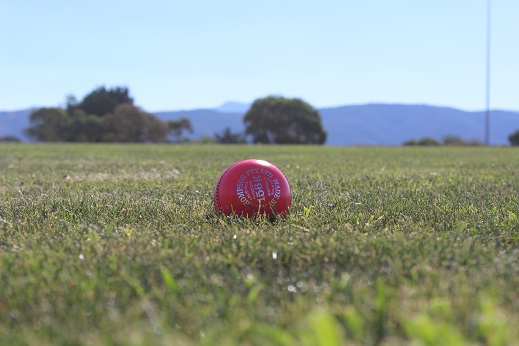Bowling Tactics and Gameplans

While simply landing the ball on the pitch and crossing your fingers may get wickets in junior levels, as batsman advance, you will need to employ tactics to take wickets. Except for a few incredibly talented individuals, bowlers can't rely on pace or spin to take bags of wickets. The purpose of bowling to a plan is to set the batsman up for a different delivery causing them to play an incorrect shot. Coaches constantly encourage this as it allows bowlers to take wickets without having to rely on the batsman playing an expansive shot. At the beginning of each over, set a ball-by-ball plan on how to dismiss a batsman then attempt to execute it.
Plans for fast-bowlers mainly involve luring the batsman to a certain position in his crease to then bowl a delivery that is awkward to play from that position. A few examples of fast-bowling plans are:
Swing: Set the batsman up by bowling a few away or in-swingers and then follow it up with a bowl that nips back the other way. This plan was executed superbly by Dale Steyn when he dismissed Ian Bell in the 4th 2010 Test, against England. He began the over with 3 away-swinger dot balls, this dragged Ian Bell across his crease outside off-stump. The next ball, while Ian Bell was weary of the away-swinger, he nips the bowl back in and takes out Bell's stumps.
Length: Push the batsman back in his crease with a series of well-executed, steep bouncers. The next ball, deliver a quick yorker angling in at the wickets. Ideally, the batsman will not move his feet towards the ball and won't be able to play the delivery.
Slower ball: When the batsman requires runs, or looks like he isn't watching the ball out of your hand, the slower ball is a deadly weapon. There are numerous different kinds of slower bowls, some with different wrist positions, some with different grips. The most important thing about variations is to disguise them. Do not foreshadow that you will bowl them or they will have no effect. The best slower balls are the ones that are hardest to pick. The back-of-the-hand slower ball is delivered by turning the position of your wrist at delivery (similar to the reverse cocking of a leg-spinner). In this way, your fingers will rip over the seam and the bowl will come out significantly slower. The knuckle ball is delivered by gripping the ball with your fingernails or lower so the ball gets practically 0 revolutions and almost 'floats'. The off-cutter and leg-cutter are delivered by rolling your fingers and wrist around the ball at delivery, similar to a spin bowler. The ball will come out slower and spin off the pitch because your wrist isn't behind the ball.
As spin bowlers don't have the raw pace, they rely on subtle variations as well as flight and guile to take their wickets. A successful spin bowler is one that analyses the batsman, finds a weakness and then bowls accordingly and accurately. Spin bowlers use three essential factors, flight, pace and spin to take wickets.
Flight & Dip: Spin bowlers don't usually beat batsman off the pitch as they are far slower than pace bowlers. Instead, they use flight to make the batsman second guess the trajectory of the ball, making their shot tentative. This tentativeness leads to a lack of footwork, leaving the batsman vulnerable to even the slightest deviation. Dip refers to the ball suddenly dropping out of normal trajectory and bouncing shorter than expected. This use of flight and dip was described by Michael Simkins in his book 'Fatty Batter', where he states how he tried to clobber it, thinking it was a full toss and ended up getting out to it.
Pace: The pace of deliveries can change not only as a variation but also as a stock-ball against certain batsman. For example, against an opening batsman, a spin bowler's stock-ball will be faster and flatter whereas tail-enders can't resist a loopier, slower delivery. Short-form spinners also manipulate the pace as a variation when the batsman is looking for runs. Short-form cricket involves less patience and more premeditation so changes of pace can be incredibly effective if timed correctly.
Spin & Drift: The factor that gives the bowlers, their name... Big turners of the ball can take wickets no matter who the batsman is. Shane Warne advocates spinning the ball hard, because no matter what age group or skill-level, you will take wickets. Even if only a couple deliveries are at the stumps, those two deliveries will get the batsman out if they have enough spin. Spin is caused by a high number of revolutions being imparted on the ball. Revolutions also cause the ball to dip and drift. If enough leg-spin revolutions are put on the ball, the ball will drift in towards the batsman like an inswinger. This gets the batsman to open up leaving him in a weak position to defend against the turn.